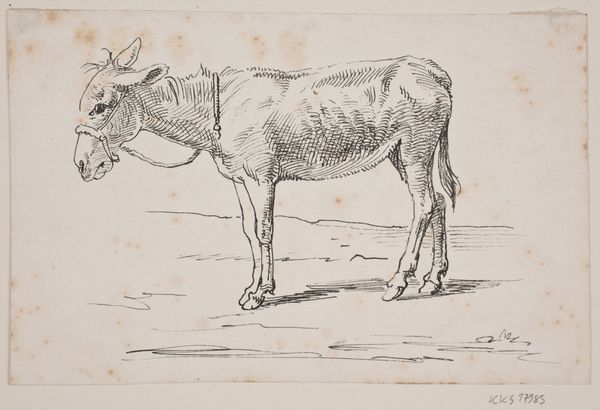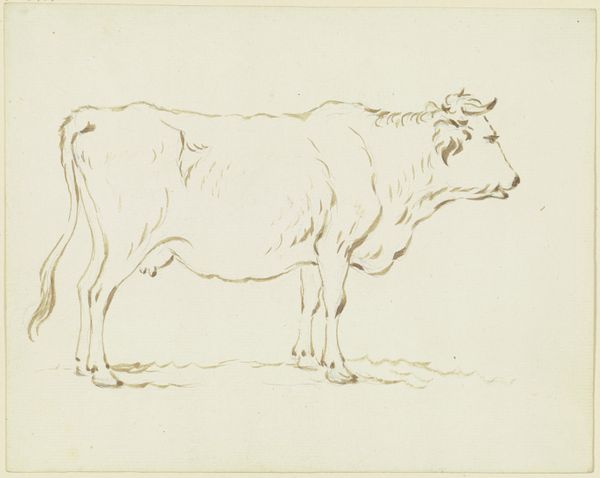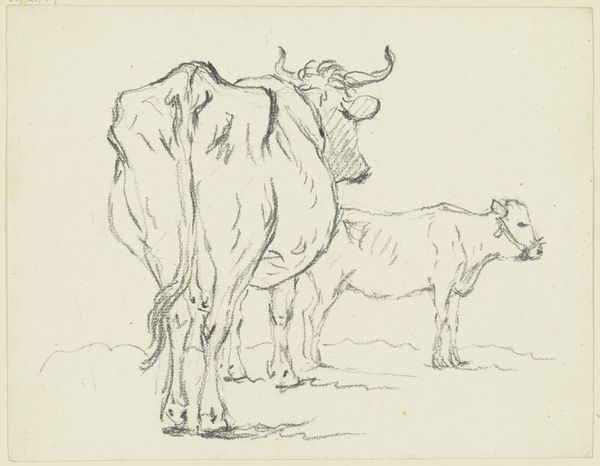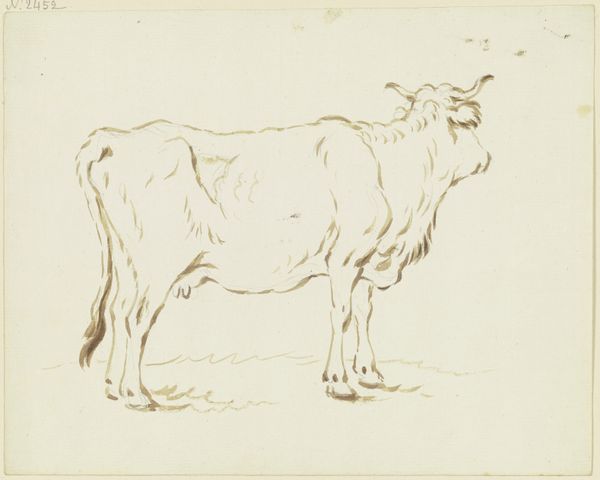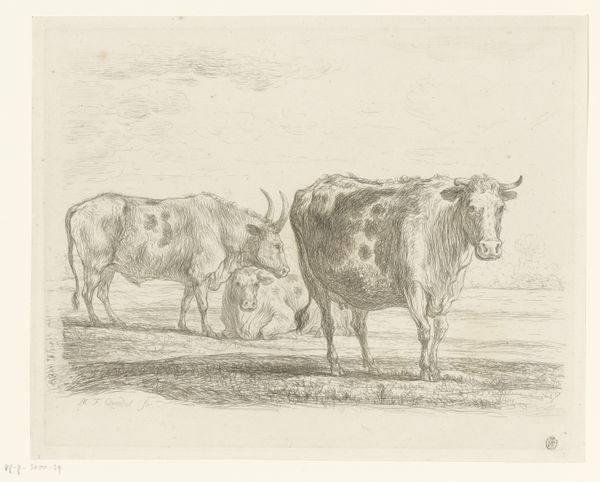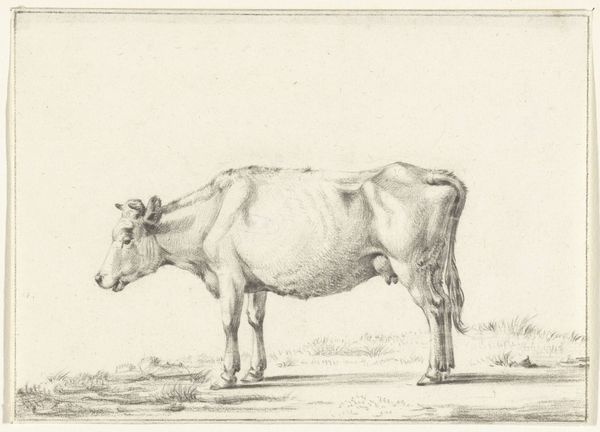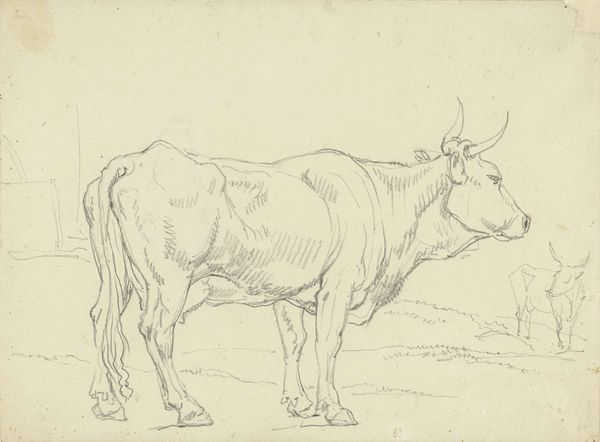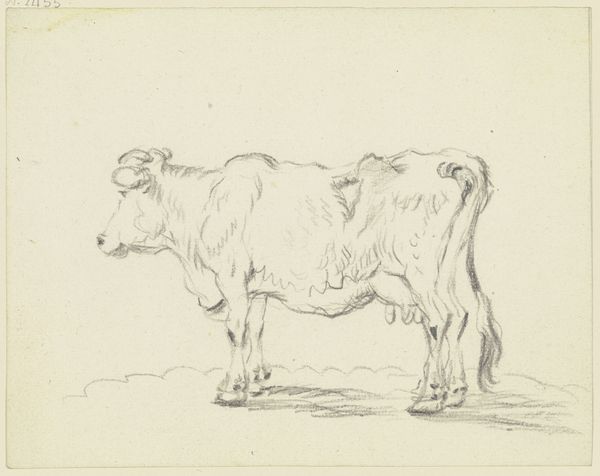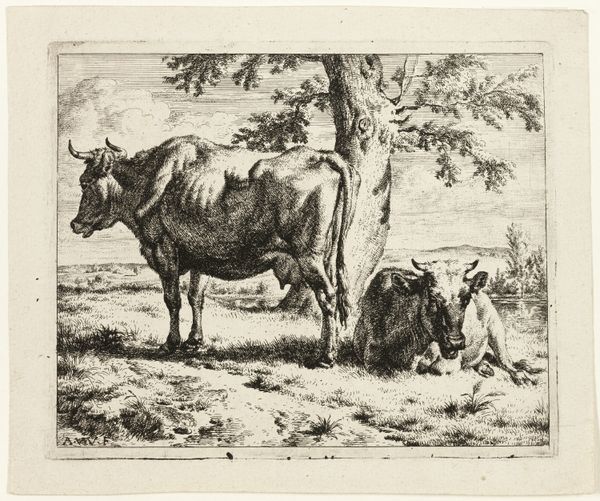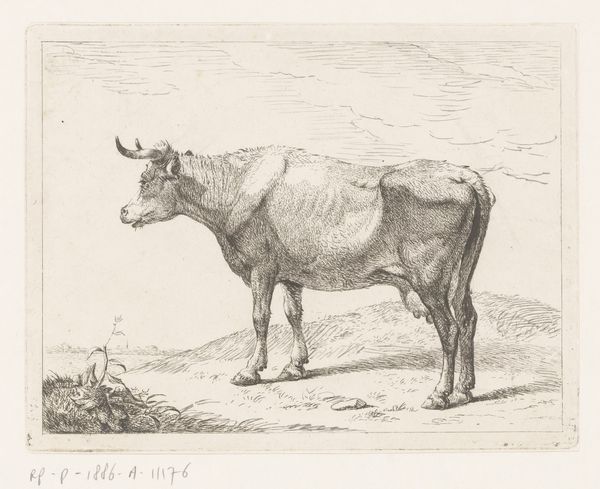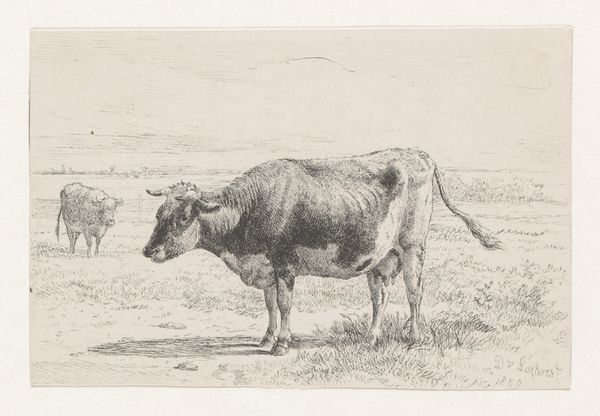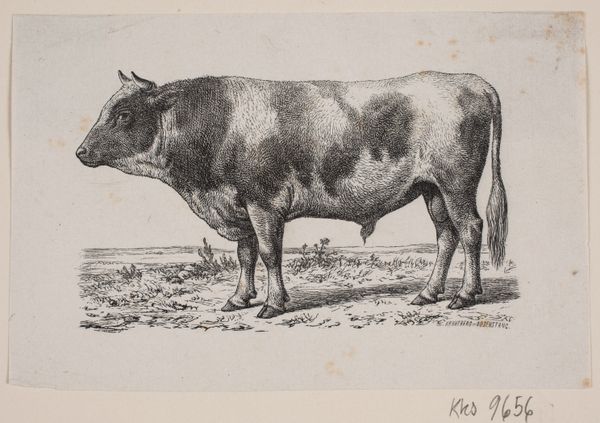
drawing, graphite
#
drawing
#
light pencil work
#
quirky sketch
#
pencil sketch
#
sketch book
#
landscape
#
figuration
#
personal sketchbook
#
sketchwork
#
pen-ink sketch
#
graphite
#
sketchbook drawing
#
storyboard and sketchbook work
#
sketchbook art
#
realism
Dimensions: height 262 mm, width 239 mm
Copyright: Rijks Museum: Open Domain
In 1794, Simon Andreas Krausz created this study of a cow and a bull using etching, a printmaking technique which would have required some degree of chemical knowledge. The process begins with a metal plate covered in a waxy, acid-resistant ground. Krausz then scratched away the ground with a needle, exposing the metal beneath. Immersing the plate in acid, the exposed lines are ‘bitten’ into the surface. The longer the plate remains in the acid, the deeper and darker the lines will be. The plate is then inked, and the surface wiped clean, leaving ink only in the etched lines. Finally, the plate and paper are run through a press, transferring the image. Look closely and you'll notice the sharp lines, and the textural variation achieved. Etching allowed for the relatively easy reproduction of images, which democratized art and made it more accessible. This study of livestock, though rooted in older traditions of naturalism, speaks to the rise of a print culture eager for accessible and informative imagery. Ultimately, appreciating the labor involved, and the materials utilized, allows us to understand the cultural significance and value of this artwork.
Comments
No comments
Be the first to comment and join the conversation on the ultimate creative platform.
